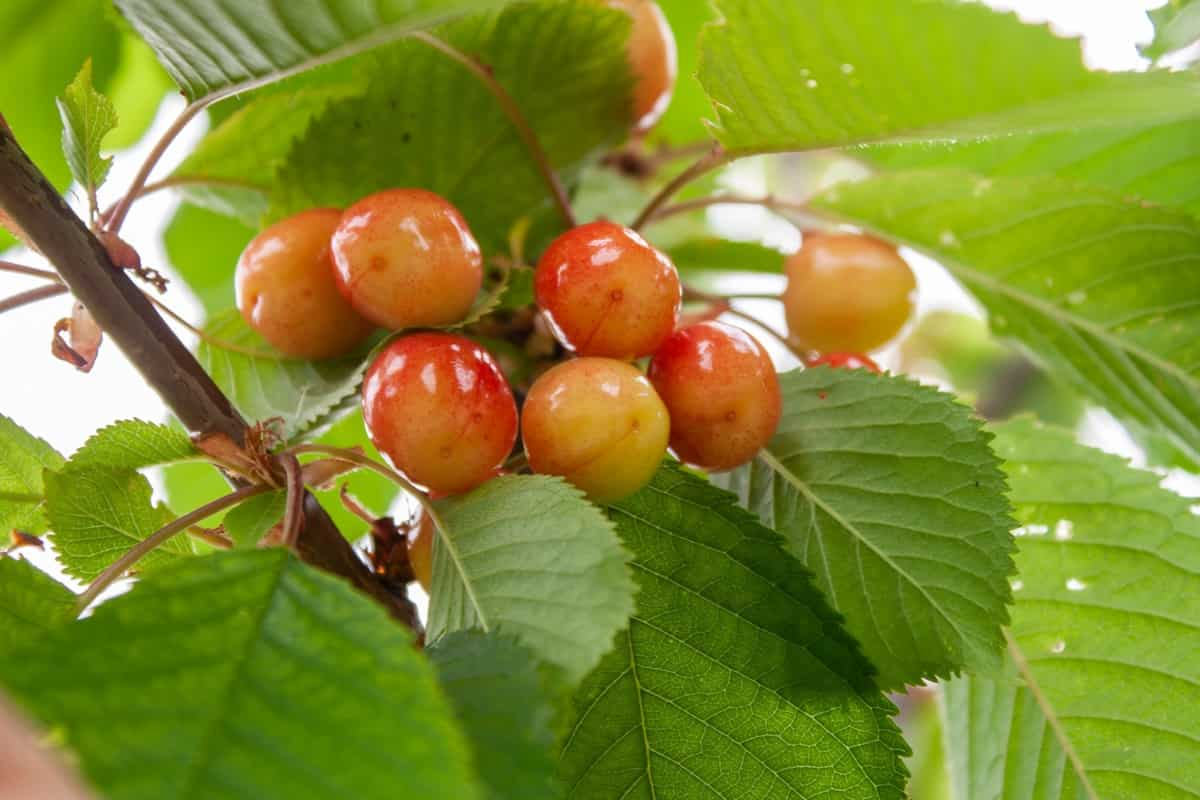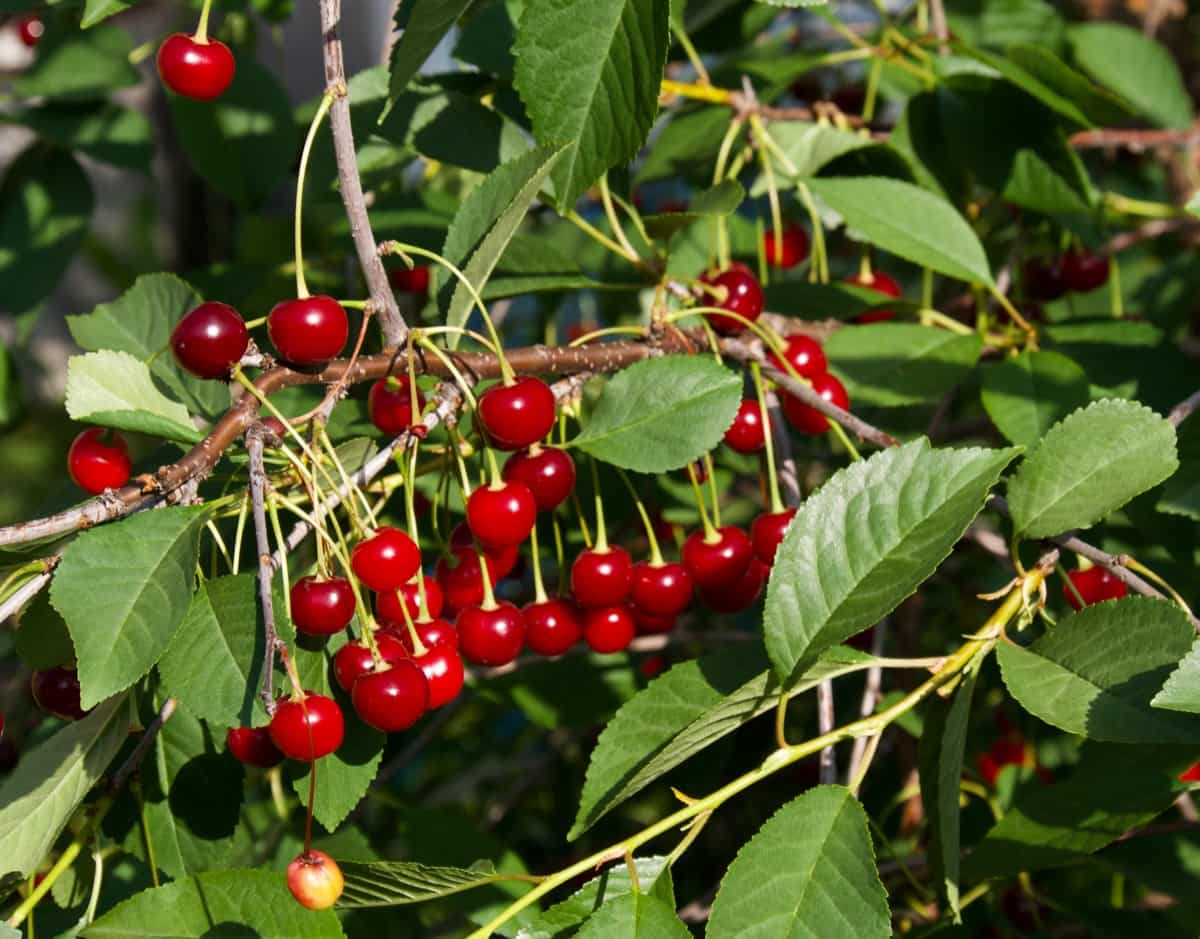Brown spots on cherry tree leaves can be a cause for concern for many gardeners and fruit tree enthusiasts. These unsightly spots can not only affect the aesthetics of the tree, but they can also be an indicator of underlying issues that need to be addressed. This article will explore the causes of brown spots on cherry tree leaves and how to treat brown spots on cherry tree leaves naturally.

How to Treat Brown Spots on Cherry Tree Leaves
Causes of Brown Spots on Cherry Tree Leaves
Fungal Infections: Fungal infections such as cherry leaf spot (Blumeriella jaapii) and brown rot (Monilinia spp.) are common culprits behind brown spots on cherry tree leaves. These infections thrive in warm and humid conditions, which can lead to the appearance of brown spots.
Bacterial Infections: Bacterial infections, such as bacterial canker (Pseudomonas syringae), can also cause brown spots on cherry tree leaves. These infections often occur when the tree is stressed or injured, providing an entry point for bacteria.
Nutrient Deficiencies: Nutrient deficiencies, particularly in nitrogen, potassium, or magnesium, can result in brown spots on cherry tree leaves. When the tree lacks essential nutrients, it becomes more susceptible to various issues, including brown spots.
Environmental Stress: Environmental stressors, like extreme temperatures, drought, or excessive moisture, can cause brown spots on cherry tree leaves. When the tree is under stress, it becomes more susceptible to disease and infection, which can manifest as brown spots on the leaves.
Organic Remedies for Cherry Leaf Brown Spot
Neem Oil: It is a natural and effective remedy for fungal infections. Dilute neem oil with water according to the instructions on the product label and spray it on the affected leaves. Repeat the application every 7-10 days until the brown spots disappear.
Copper-Based Fungicides: Copper-based fungicides can help control fungal infections on cherry tree leaves. Follow the label instructions on the product and apply the fungicide as directed. Be sure to wear gloves and clothing during application for protection.
Pruning: Pruning infected branches and leaves can help prevent the spread of fungal or bacterial infections. Make clean cuts using sterilized pruning tools and properly dispose of the infected plant material.
Home Remedies for Nutrient Deficiencies in Cherry Trees
Compost or Organic Fertilizer: Improve the nutrient content of the soil by adding compost or organic fertilizers to the base of the tree. This will provide the cherry tree with essential nutrients and help prevent nutrient deficiencies that can lead to brown spots.
Epsom Salt: If your cherry tree is lacking magnesium, dissolve Epsom salt in water and apply it to the base of the tree. This will help the tree absorb the necessary magnesium and alleviate nutrient deficiencies.
Mulching: Apply an organic mulch layer around the base of the cherry tree to retain moisture and provide a slow release of nutrients. This will help maintain a healthy soil environment and prevent nutrient deficiencies.
In case you missed it: How to Grow and Care for Cherry Bonsai: Planting, Pruning, and Repotting

Natural Ways to Prevent Sunburn on Cherry Tree Leaves
- Selecting an appropriate location for your cherry tree prevents sunburn on the leaves. Plant the tree in an area that receives partial shade, particularly during the hottest time of the day.
- Ensuring that your cherry tree has adequate shade can help shield the leaves from excessive sun exposure. Consider planting taller trees or installing shade cloth to create a protective canopy over the cherry tree.
- Mulching the soil around the cherry tree can help regulate soil temperature and retain moisture. Apply an organic mulch, like wood chips or straw, around the tree’s base. This will help keep the roots cool and prevent sunburn on the leaves.
- Make sure to water the tree regularly, especially during hot and dry periods. Deep watering is recommended to ensure the roots receive sufficient moisture, which in turn helps prevent sunburn.
Organic Solutions for Drought Stress in Cherry Trees
- Organic amendments like compost and well-rotted manure enhance the soil’s water-holding capacity and improve its structure. These amendments increase the soil’s ability to retain moisture, reducing the impact of drought stress on cherry trees.
- Opt for deep and infrequent watering to encourage deep root growth and improve water uptake efficiency. Drip irrigation systems or soaker hoses can deliver water directly to the root zone, minimizing water loss through evaporation.
- Planting companion plants or using shade cloth can create a microclimate that shields cherry trees from direct sunlight during the hottest time of the day. This practice helps to conserve moisture and alleviate drought stress.
- Applying organic mulch, such as wood chips or straw, around the base of cherry trees can significantly reduce evaporation and improve water retention.
Natural Remedies for Cherry Tree Leaf Scorch
- Cherry trees require regular watering, especially during dry periods. Deep watering is recommended, as it promotes root growth and helps the tree withstand environmental stress.
- Cherry trees are more prone to leaf scorch during periods of stress, such as extreme temperatures or drought. Protect your cherry tree from extreme weather conditions by providing shade in hot summer months or using protective covers during frosty winters.
- Applying an organic mulch layer around the base of the cherry tree can help retain moisture, regulate soil temperature, and suppress weed growth.
Home Treatments for Cherry Tree Leaf Blight
- There are several organic fungicides available that can help control leaf blight. These fungicides contain natural ingredients like neem oil, copper, or sulfur, which are effective against fungal diseases.
- Leaf blight thrives in warm and humid conditions. To combat this, ensure proper air circulation around your cherry tree by trimming nearby shrubs and branches that may be blocking airflow.
- Cherry trees that are well-nourished are better equipped to fight off diseases. Apply a balanced fertilizer to your cherry tree in early spring to encourage healthy growth and strengthen its natural defenses against leaf blight.
Natural Remedies for Cherry Tree Leaf Spot Diseases
Neem oil: Mix neem oil with water according to the manufacturer’s instructions and spray it onto the leaves, covering both the upper and lower surfaces. Repeat the application every 7-14 days or as recommended.
Baking soda spray: Mix one tablespoon baking soda in 4 liters of water and add a few drops of mild liquid soap. Spray this solution onto the cherry tree leaves, focusing on the affected areas. Repeat every 7-10 days until the symptoms subside.
Organic compost: Applying organic compost around the base of the cherry tree can help improve soil fertility and overall tree health. Healthy trees are better able to resist and recover from leaf spot diseases.
Beneficial insects: Encouraging beneficial insects, such as ladybugs and lacewings, can help control pests contributing to leaf spot diseases. Planting flowers and herbs that attract these beneficial insects can create a natural balance in the garden.
In case you missed it: 9 Causes of Dying Cherry Trees and How to Fix Them?

Conclusion
Brown spots on cherry tree leaves can be treated naturally using effective organic home remedies. By implementing these remedies, you can restore the health and beauty of your cherry tree, ensuring it thrives for years to come.
- Feed Your Flock for Less: Top 10 Tips to Save on Chicken Feed
- Ultimate Guide to Ossabaw Island Hog: Breeding, Raising, Diet, and Care
- Hatching Answers: The Top 10 Reasons Your Chickens Aren’t Laying Eggs
- Eggs and Economics: Breaking Down the Cost of Raising Backyard Chickens
- Defend Your Greens: Proven Methods to Keep Iguanas Out of Your Garden
- Ultimate Guide to Cinnamon Queen Chicken: A Comprehensive Guide for Beginners
- Ultimate Guide to California Tan Chicken: Breeding, Raising, Diet, Egg-Production and Care
- Ultimate Guide to Marsh Daisy Chicken: Breeding, Raising, Diet, and Care
- 10 Types of Chicken Farming Businesses You Can Start for Profits